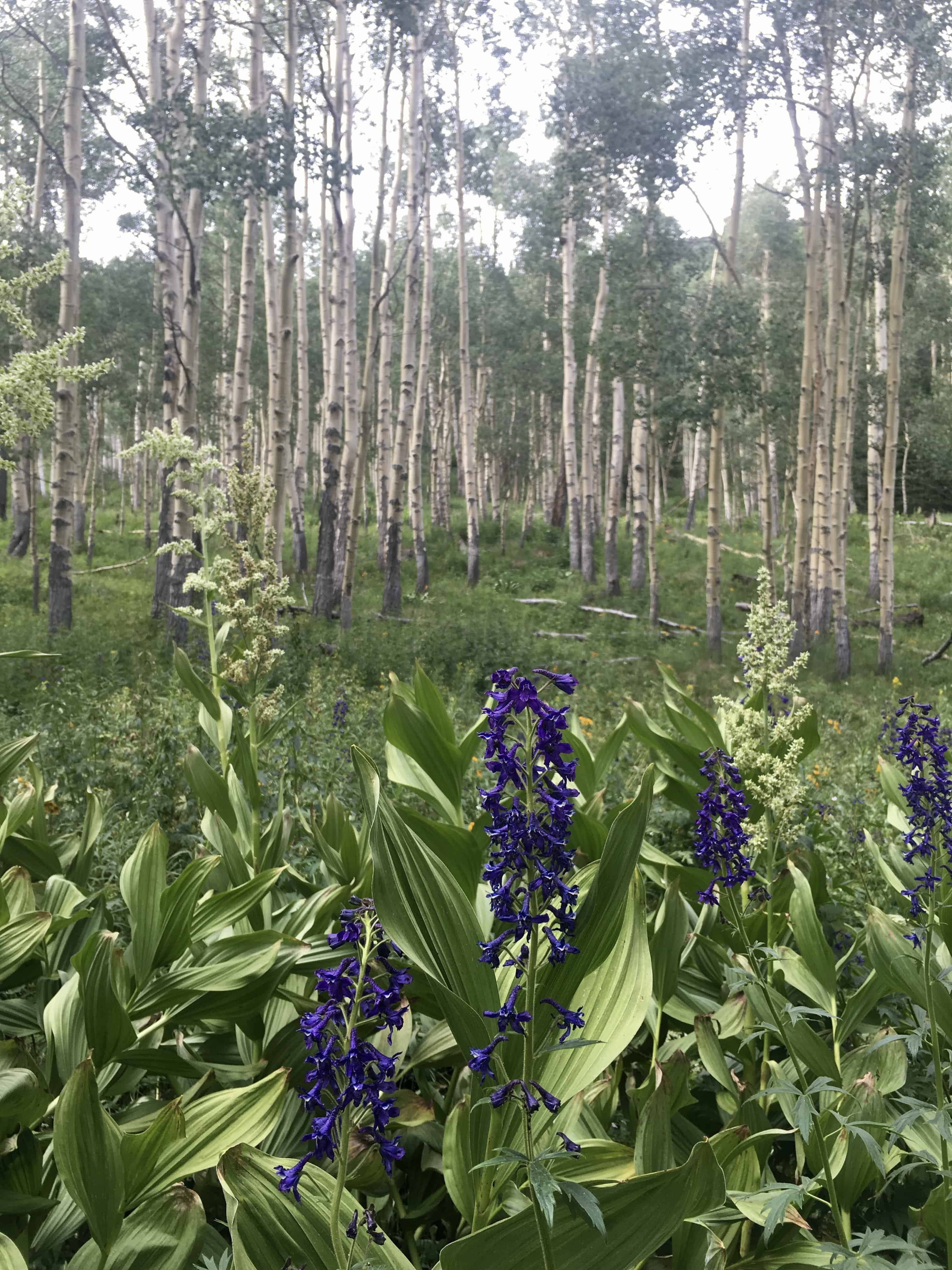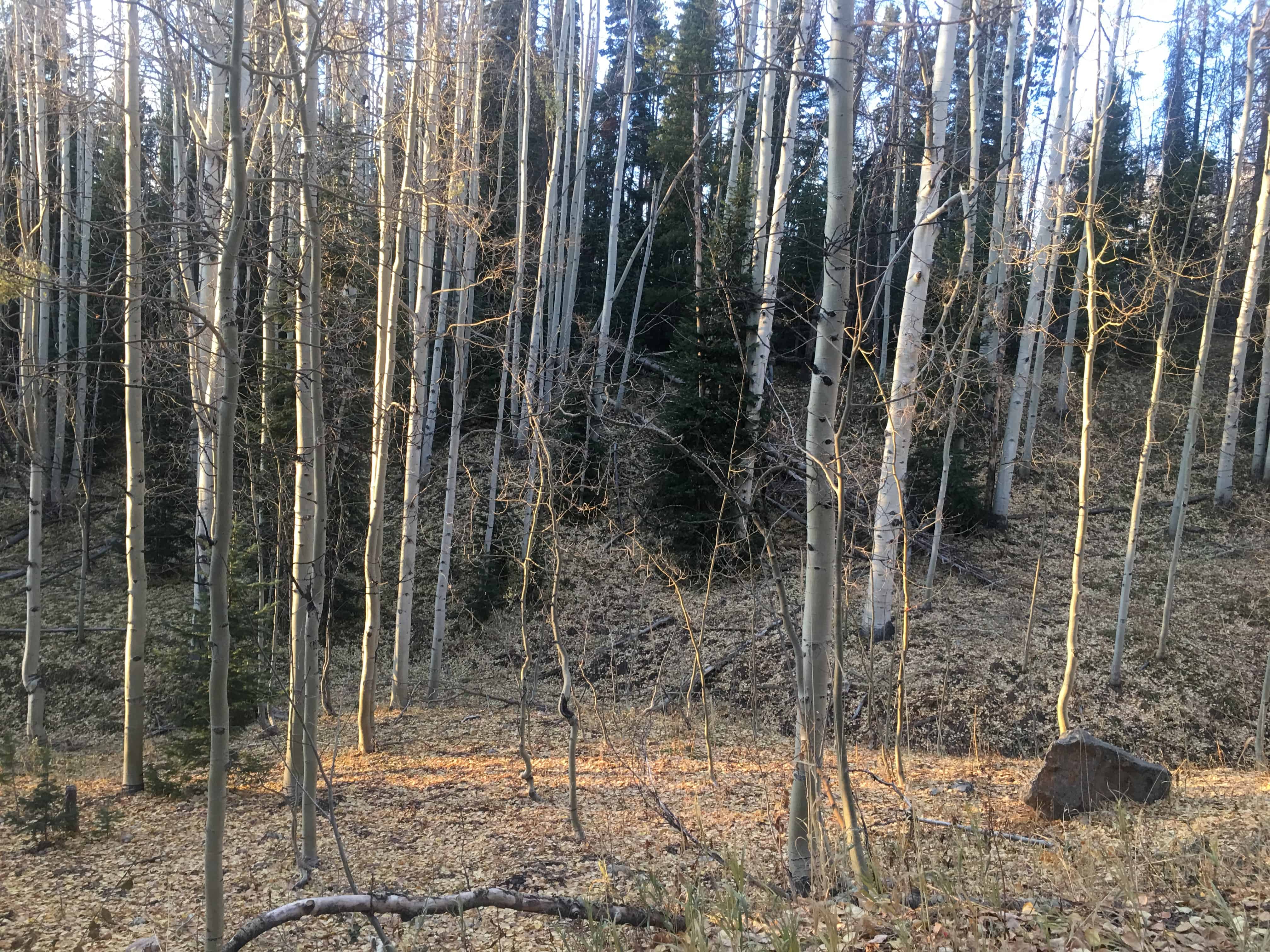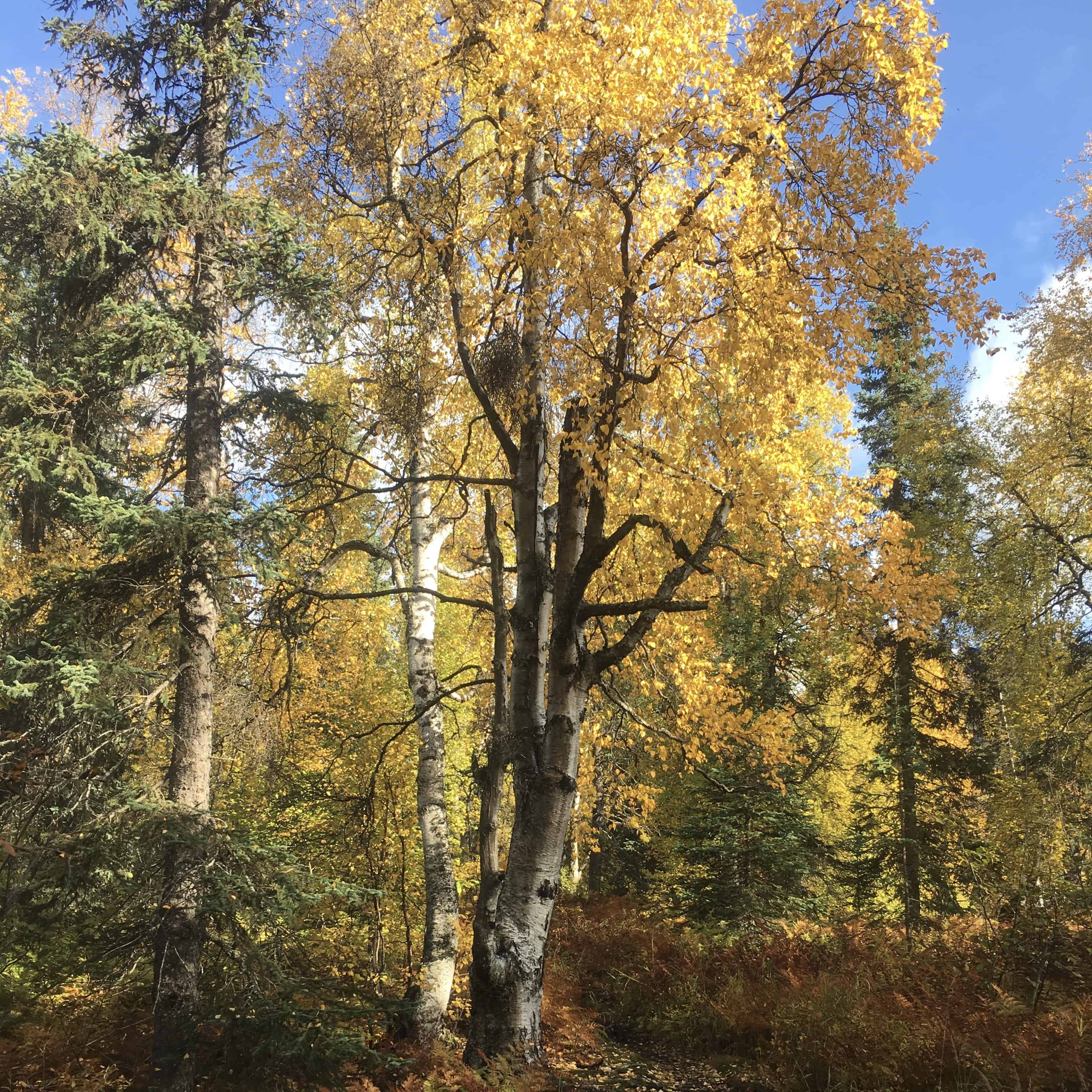The American Aspen tree, Populus Tremuloides, is native to cooler areas of North America such as western states and Canada. The photos in this post were all taken in Colorado. It has a lot of different common names, one of which is Trembling or Quaking Aspen.
General Description
American Aspen are deciduous trees that can grow to about 20-80 feet tall. Their bark is a variety of shades of white, silver, yellow and gray. The different colors in the bark represent differing levels of chloroplasts which have photosynthetic capacities. The bark may get rough fissures that turn black as it ages. The leaves are bright to yellowish green, small, rounded, and pointed at the top. The edges are serrated. The stem is flat and lies perpendicular to the leaf, which causes the characteristic flutter and the scientific name of Populus Tremuloides. In the summer they provide a unique contrast of silver and green with leaves that flutter happily in even the simplest of breezes. In the fall, the leaves usually turn a bright gold.
One way Aspen trees reproduce is through root sprouts. A large grove of Aspen trees is called a clone. These clones share a common root system. When a tree dies, it sends chemicals to the roots to stimulate new growth, so the clones are much older than the individual trees. Clones have been reported to have originated in the ice age. One of the most famous clones is the Pando Clone in Fishlake National Forest, Utah.
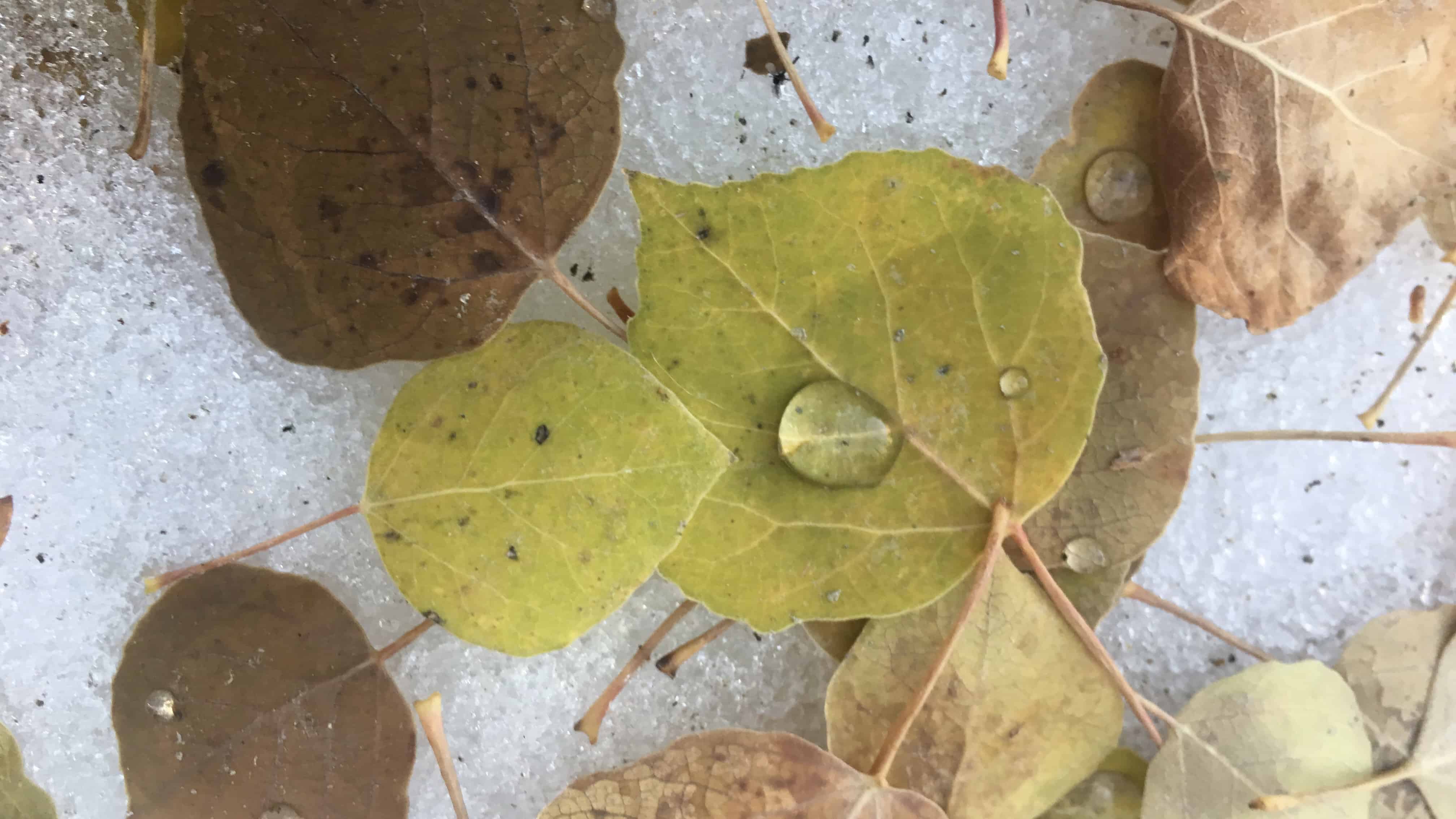
Bright orange and yellow Aspen leaves in the fall
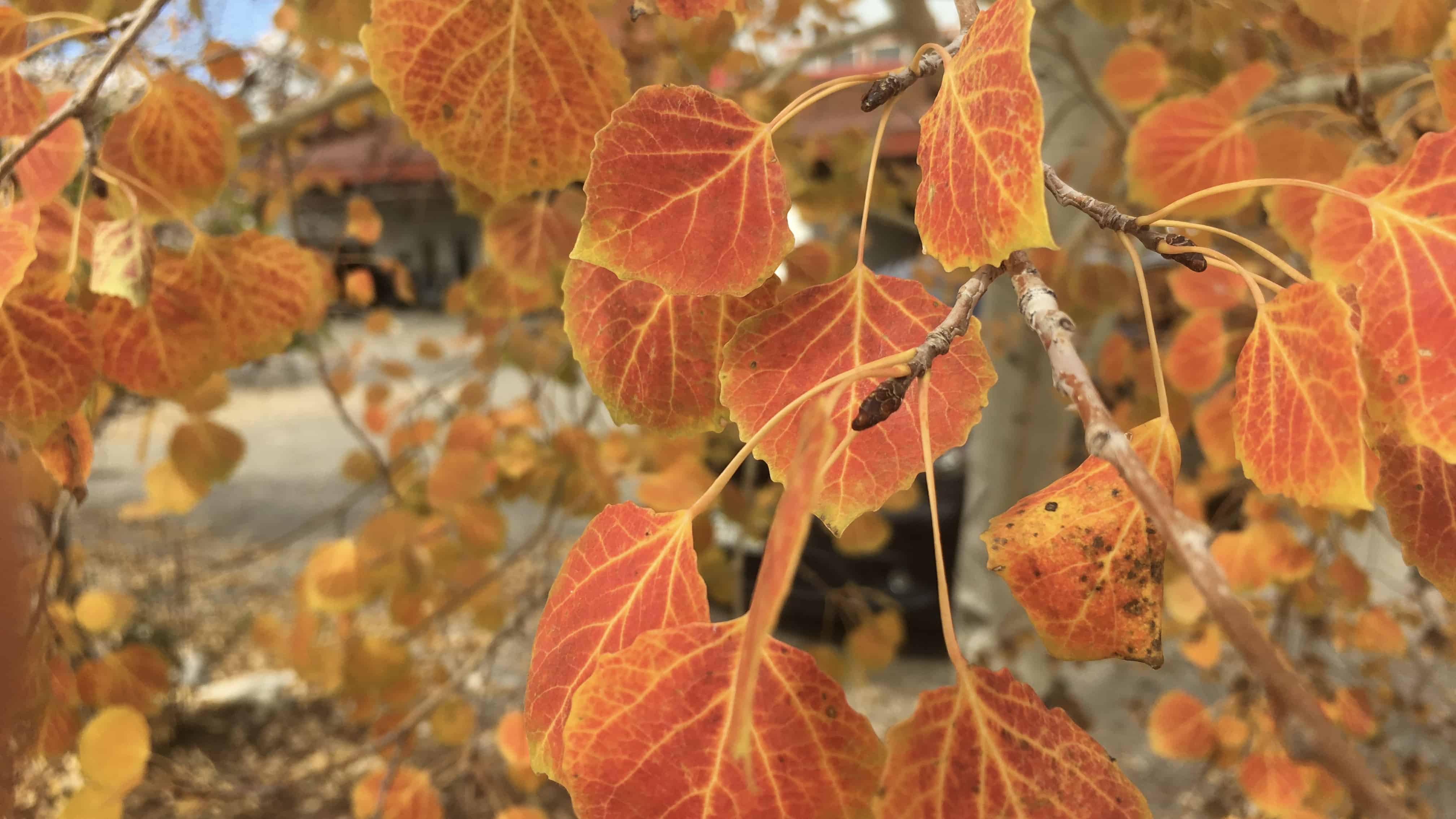
Aspen trees in the winter in Steamboat Springs, CO
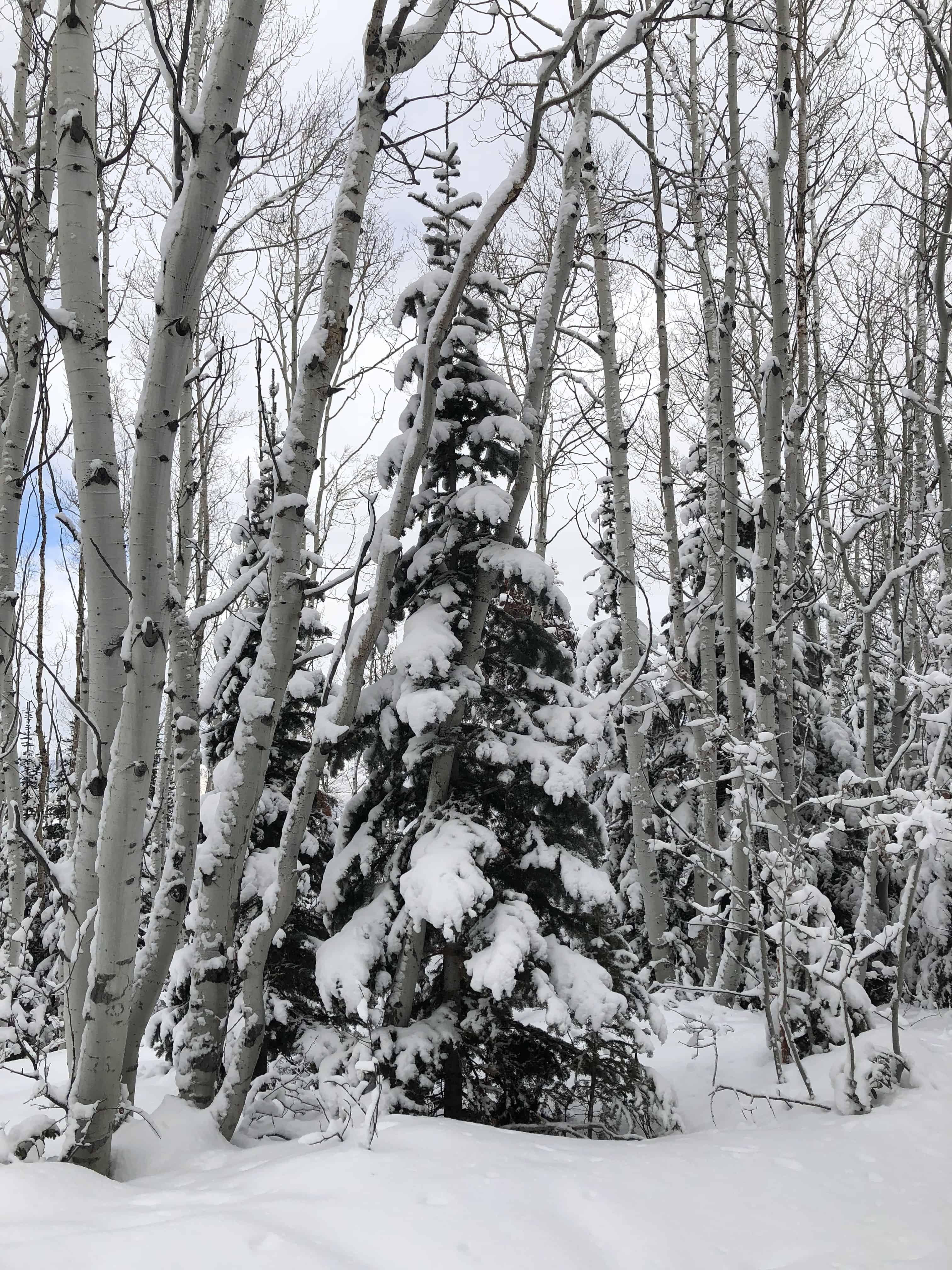
Quaking Aspens don’t compete well for light. These trees do best in areas where taller trees are absent. They also are considered a disturbed habitat species, therefore they thrive in area where the land is frequently disturbed by avalanches, mudslides, fires, or other natural disturbances. The disturbances help to keep shade tolerant species at bay. Their extensive underground root system is able to regenerate in even the most extreme situations.
